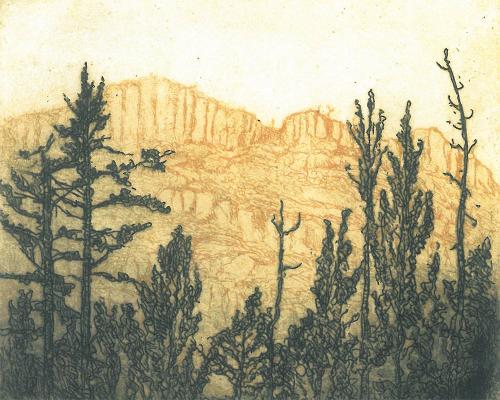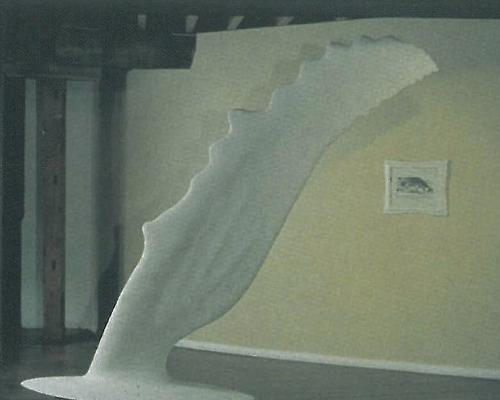The three Wakefield Press books, based on typical exhibition catalogue formats, are beautifully produced. As all books on visual artists should be, they are predominantly about images. In this case page after page of superbly presented images present a feast for the eye, with just enough text and autobiographical information to complete the picture. I particularly like the way they seem to fall open at the 'gallery' section. It's like walking into a real gallery where one is free to move from piece to piece, ignoring for the moment any explanations. I found this refreshing. There -is an understated cleverness about the design approach these books have taken which is inviting. The very size and weight of the books seems right, inviting the reader/viewer to automatically flick to the images. Only after the initial visual feast is the reader drawn to the text, which in all three cases is clearly set out and not over-long. Biographical details and glossary are at the back for those interested in further exploring the artists' work.
This formula works well in each case and should be ideal for all kinds of readerships, especially students with heavy workloads. I hope that Wakefield Press continues with the series.
The first of these books, Annette Bezor: A Passionate Gaze covers the artist's career from 1981 and sets the tone with consistently good design and clarity of image. The picture section is sumptuous, perfectly capturing the artist's relatively short working history and the text by Richard Grayson is free of jargon, providing a useful insight into the historical and political background to the artist's work. Interestingly there is no direct reference in Grayson's writing, or indeed in the artist's work, to Australia. While this is refreshing, it begs the question (given Grayson's references to the human condition): does place matter? In Bezor's case, apparently not.
James Darling: Instinct, Imagination, Physical Work continues the format, with text by Daniel Thomas offering personal observations on the artist's life. Once again the book falls open on the 'gallery' section. My only concern here is that while all images are beautifully reproduced they seem, on second viewing, a little repetitive. On reading the text it becomes clear that Darling is a part-time artist whose output is relatively thin. In order to maintain the format, and a certain 'weight', images are unnecessarily repeated. Unlike Bezor, Darling's work is grounded in a specific, southern Australian environment, being at times almost folk-like in its references to land and our place in it.
Nick Mount: Incandescence is also full of beautifully produced images but by this time the sen se of these publications being elaborate catalogues grows stronger. There is also a feeling, in the text by Margot Osborne, that the essay writer is a little too close to her subject. Do we really need to know that 'by 1974 Nick Mount was twenty-two and casting around for direction,' or that 'at Adelaide's prestigious St Peter's College he had been interested in academic pursuits'? Is the imagery a little too slick? Where are the working drawings, the quick sketches or whatever it was that Mount - and the other artists in these Wakefield P ress publications - used to develop the final works?
Horizon; Greg Johns sculptures 1977 - 2002 is a different kind of book; not so much super quality catalogue but rather a detailed account of an artist's life and work by friend and art critic John Neylon. While a detailed and worthy addition to the literature on Australian sculptors, it lacks the design finesse of the Wakefield Press publications and the quality of the overall design lacks consistency. There is rather too much text, much of it overly detailed and unnecessary. The occasional use of white text on black paper - reflecting perhaps the stark tonality of John's unpainted steel structures - adds nothing to the overall design. Nor does the placement of all the colour images at the front of the book before the contents page.
Despite these criticisms this book provides an impressive survey of a body of work that is con sistent and substantial. This is due in part to the quality of John's work, which, while locked into 1970s formalism, demonstrates a profound commitment to what is essentially one strong, central idea. The inclusion of working sketches and images of works in progress adds to the book's interest.












